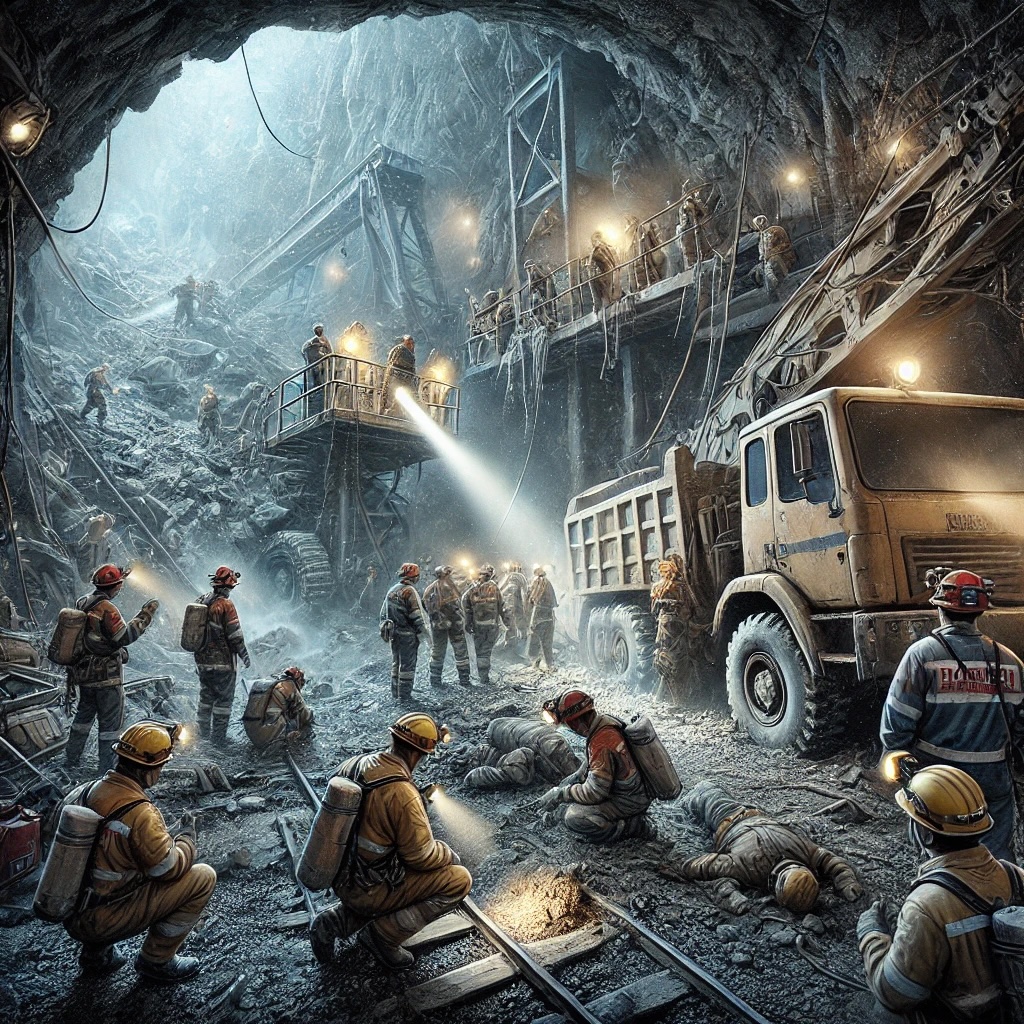From Cave-Ins to Machinery Failures: A Look at Mining’s Most Common Hazards
The mining industry is inherently hazardous, with a wide range of potential risks that can lead to serious accidents. Understanding the most common types of industrial accidents in mining can help businesses and individuals take proactive measures to prevent them.
Statistics
- Fatalities: Worldwide, mining accidents claim hundreds of lives every year. For example, in 2021, mining-related fatalities in the U.S. were at 37, according to the U.S. Mine Safety and Health Administration (MSHA). Globally, the number can vary greatly depending on the region, with countries like China and India having higher numbers of fatalities due to their extensive mining industries and sometimes less stringent safety regulations.
- Injuries: Non-fatal injuries are also common, with injuries ranging from minor accidents to life-altering events such as amputations, falls, and respiratory illnesses like black lung disease.
- The U.S. has seen improvements in mining safety over recent decades due to stronger regulations. According to the MSHA:
- Fatalities: In 2022, there were 29 mining-related fatalities across different sectors (coal, metal, and non-metal).
- Injury Rate: The U.S. reports an injury incidence rate (number of injuries per 100 full-time workers) of 2.27 in coal mining and 2.17 in metal/non-metal mining.
- In countries with fewer regulations, mining accidents are more frequent. For example:
- China: Historically, China has had some of the highest rates of mining fatalities due to the size of its mining sector and weaker safety protocols in some areas. In 2020, China reported 434 mining fatalities, down from previous years, but still high compared to other industrialized nations.
- South Africa: A leading mining nation in Africa, South Africa has seen improvements but still reported 49 mining deaths in 2021.
Trends
- Improvement in Developed Countries: Over the past 50 years, mining fatalities and injuries in countries like the U.S. and Australia have significantly decreased due to advanced technology, safety practices, and stricter regulations.
- Ongoing Challenges in Developing Countries: Fatality rates remain higher in developing countries where mining safety regulations are less rigorous or poorly enforced.

Top Types of Industrial Mining Accidents
Falls:
- Falls from heights: Miners can fall from elevated surfaces, such as catwalks, platforms, or ladders.
- Slips and trips: Slippery surfaces, uneven ground, or obstacles can lead to falls, causing injuries.
Entrapment:
- Cave-ins: Miners can become trapped when underground structures collapse.
- Equipment entrapment: Workers can become caught in machinery or equipment.
Machinery Accidents:
- Amputations: Miners can lose limbs if they become caught in machinery.
- Crush injuries: Heavy machinery can crush workers, causing severe injuries or fatalities.
Explosions:
- Gas explosions: Methane and other combustible gases can ignite, causing explosions that can injure or kill miners.
- Dust explosions: Airborne dust particles can ignite, leading to explosions.
Rockbursts:
- Sudden releases of energy: Rockbursts can occur when rock formations release stored energy, causing damage to equipment and potentially injuring miners.
Electrocution:
- Contact with live wires: Miners can be electrocuted if they come into contact with live electrical wires or equipment.
- Faulty wiring: Improperly installed or damaged wiring can create dangerous conditions.
Chemical Exposure:
- Inhalation: Miners can be exposed to harmful chemicals through inhalation.
- Skin contact: Chemicals can come into contact with the skin, causing irritation or burns.
Prevention Strategies
To reduce the risk of industrial mining accidents, businesses should implement the following strategies:
- Ventilation: Ensure adequate ventilation to prevent the accumulation of hazardous gases.
- Rockburst prevention: Monitor rock formations to identify potential risks and take preventive measures.
- Machinery safety: Guard machinery to prevent workers from coming into contact with hazardous parts.
- Electrical safety: Ensure that electrical equipment is properly installed, maintained, and inspected.
- Chemical safety: Provide appropriate personal protective equipment and implement safe handling procedures for chemicals.
- Training and education: Provide comprehensive training to miners on safety procedures and hazard recognition.
By understanding the common types of industrial mining accidents and implementing effective prevention measures, businesses can significantly reduce the risk of accidents and protect the safety of their employees.